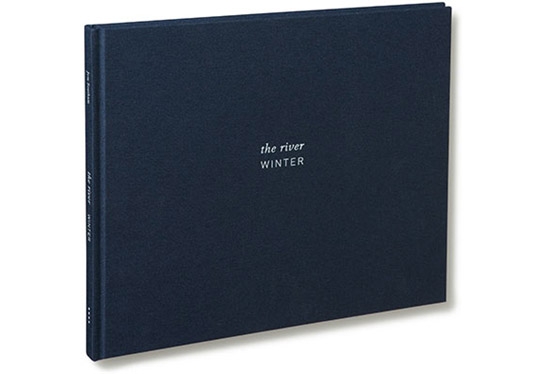Review: The River WINTER by Jem Southam

Winter is upon us, yet again, at least in the Northern Hemisphere. This means “the holidays” (incl. Listmas, if you spend too much time online), and then the long wait for spring, as if winter itself had nothing to offer. It would seem it doesn’t. People would rather pretend they’re enjoying themselves in sweltering summer heat instead of going for a walk in the winter. I don’t know why that is. I will admit that I enjoy the seasons, and I am actually fairly suspicious of places where there are none. The seasons are life, or maybe more accurately the circle of life we’re all subject to - whether we like it or not. Dismissing or rejecting the seasons means dismissing or rejecting life, and clinging to a surreal fantasy (it’s no coincidence Hollywood is in a place that doesn’t know actual seasons). After all, winter, our winter, is going to get us all, eventually.
If you’re an artist, winter has much to offer. The noises about artists being supposedly most productive when they’re young notwithstanding, winter produces better art than spring (or summer). Spring is full of promises, summer its over-the-top fulfillment that somehow leaves us wanting. Fall, however, is where things get interesting, when we don’t have to rush around so much any longer. And winter… winter is when your eyes are open, and you can finally see, all the earlier burdens lifted from one’s shoulders, discarded for what they are: Rubbish.
Winter, the season, offers just as much. Jem Southam’s The River WINTER, photographed over the course of a single winter, makes this clear. I’m not much of an expert of landscapes as an artistic topic. There is a long tradition and history, that much I know, but so far, I’ve been approaching it mostly as something to take in. The term “landscape,” in a photograph, appears to mean many things (note my ignorance of the conventions), and of course, Southam’s photographs are landscape photographs. But I’m always struck by their intimacy.
Usually, intimacy is not a word I associate with landscapes. Landscapes usually tend to be sublime, because that’s what is demanded of them. I don’t think many people would think of their garden or backyard as a landscape (unless they’re part of the 1% and own gigantic parts of land). But I think Southam might. I want to think that. I know that I certainly do.
Southam’s landscapes are also not so concerned with the view per se. If there are branches in the foreground, dissecting the view into countless little fragments, then so be it. The River WINTER even contains photographs that are almost black, with the landscape turned into what you might see in the stained-glass windows of cathedrals. It’s a form of the sublime, I want to think, but one where the sublime does not result from a puny person’s presence exposed to a vastly larger world. Instead, it’s a sublime where the world is exposed as that which is perceived by the puny person: Driven by the desire to find much, much more, out there somewhere, with awareness of the fact that there might not be anything. That kind of sublime, which I don’t think is listed in dictionaries, is our species’ spiritual sublime.
Our spiritual sublime is an expression of us wanting to be part of something much larger, whatever it might be. You can find it in religion (in all its often distorted if not outright perverted ways), and you can find it in art. You certainly can find it in The River WINTER. Highly recommended.
The River WINTER, photographs by Jem Southam, essay by Richard Hamblyn, 96 pages, Mack, 2012